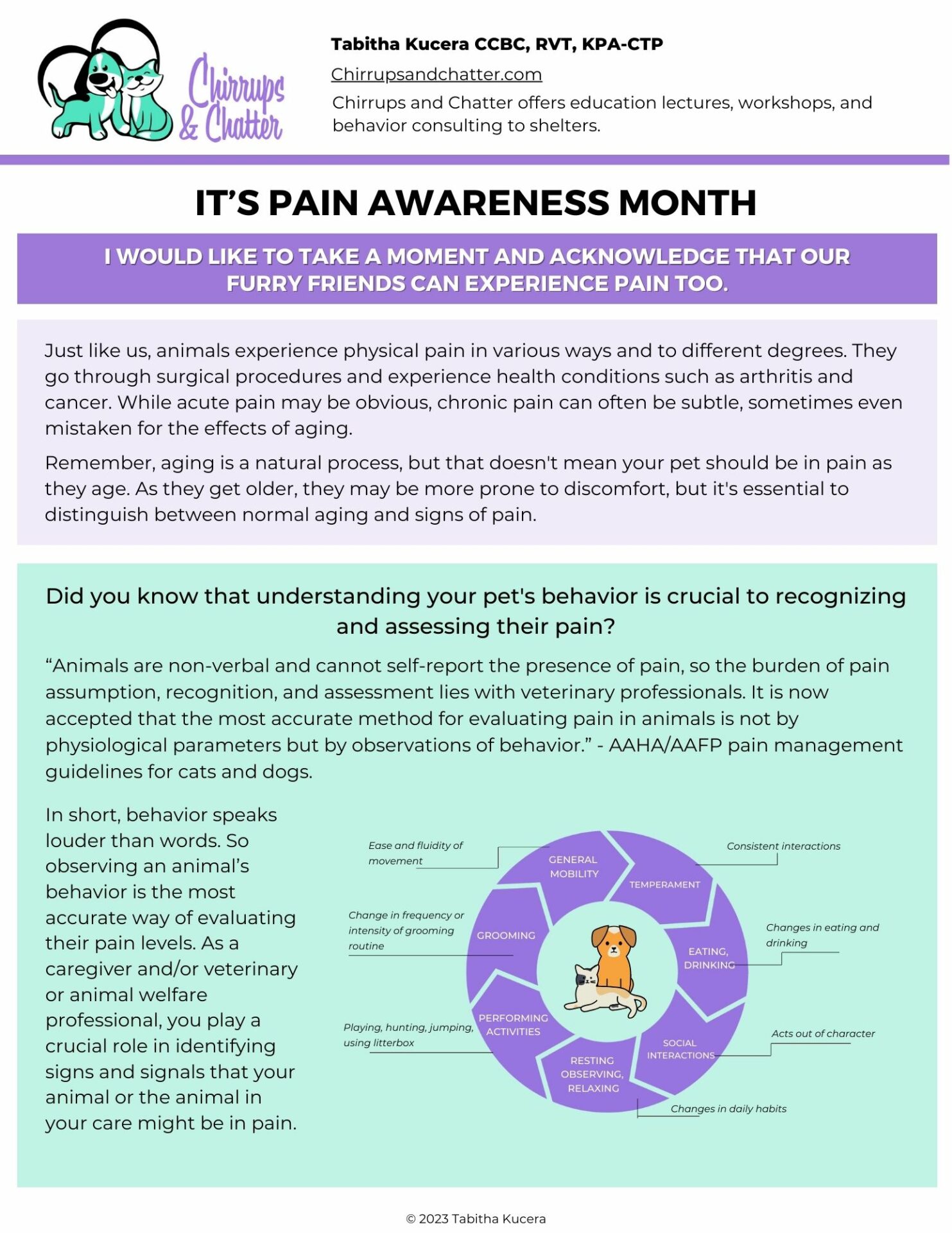
Pain Awareness Month
This guide includes recommendations for advocating for your pet by looking for changes in their normal and learning the signs of pain.
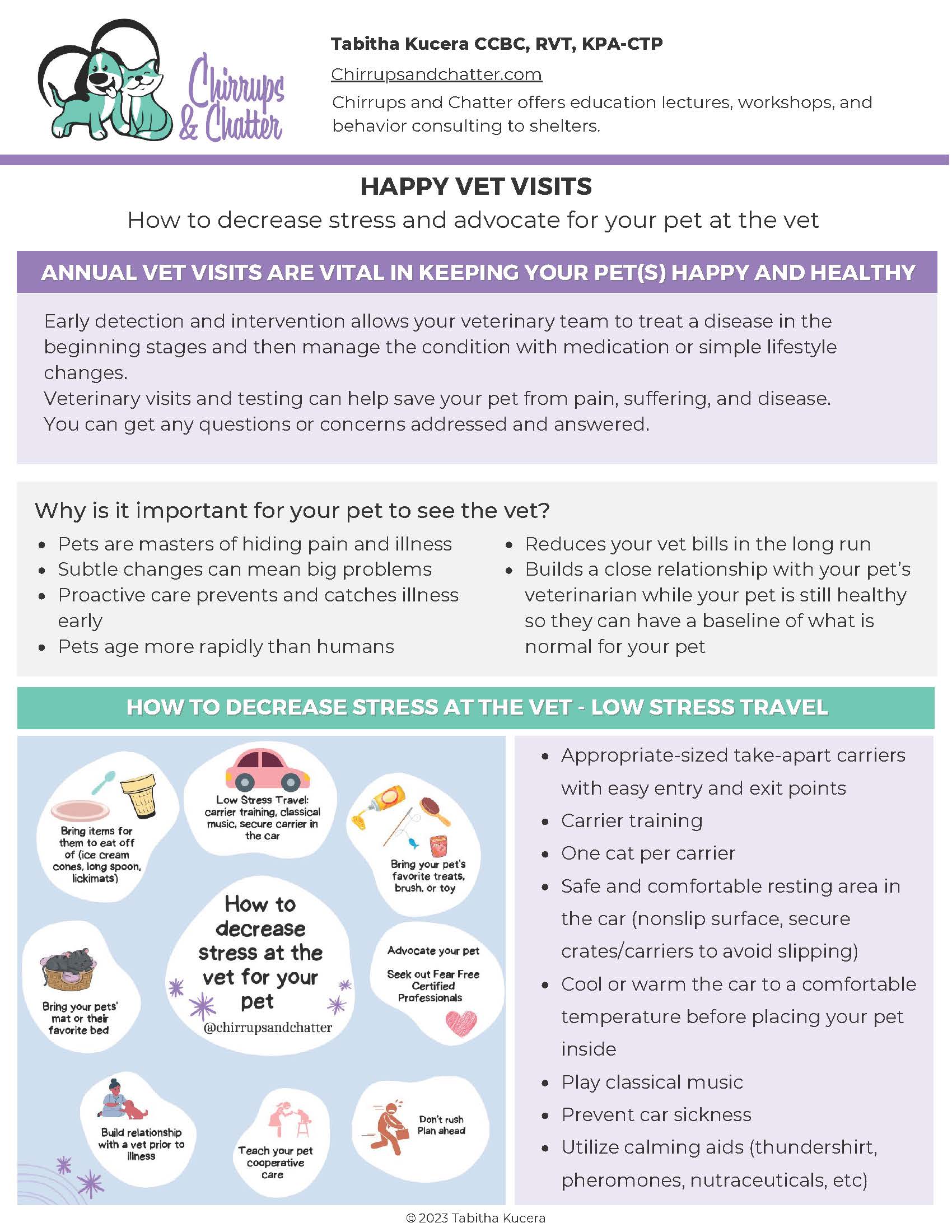
Happy Vet Visits
This guide includes recommendations for decreasing stress and advocating for your pet at the vet.

Fearful Kitten Socialization 101
This guide includes recommendations and techniques for socializing fearful kittens (or fearful adult cats!) From setting up their environment, interactions, introducing the clicker, and counterconditioning and desensitization.
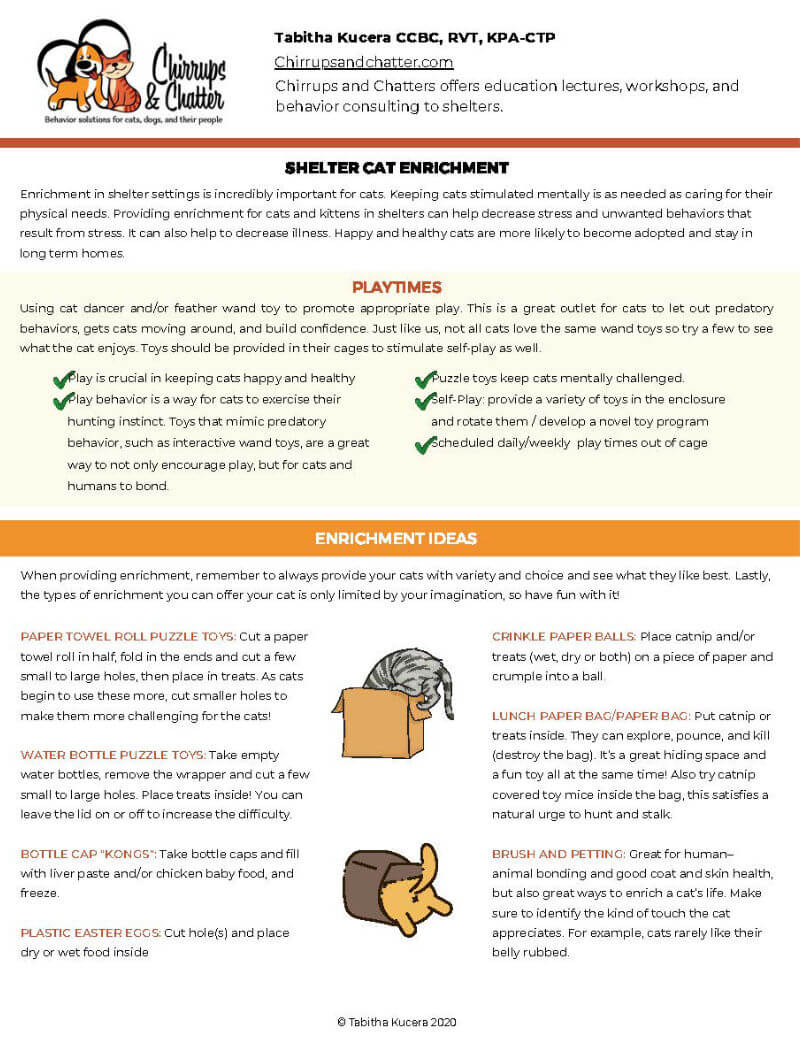
Shelter Cat Enrichment
Cats have natural behaviors and needs, and they must have opportunities to express those behaviors. An enriched environment should provide various types of scratching surfaces, outlets for predatory and prey behavior, safe places, and should respect all five of your cat’s senses which provides an environment in which an animal has variety, choice, and control over their daily activities. Providing for a cat’s mental well-being is just as important as providing for their physical well-being. This guide includes practical application of shelter enrichment and enrichment examples.
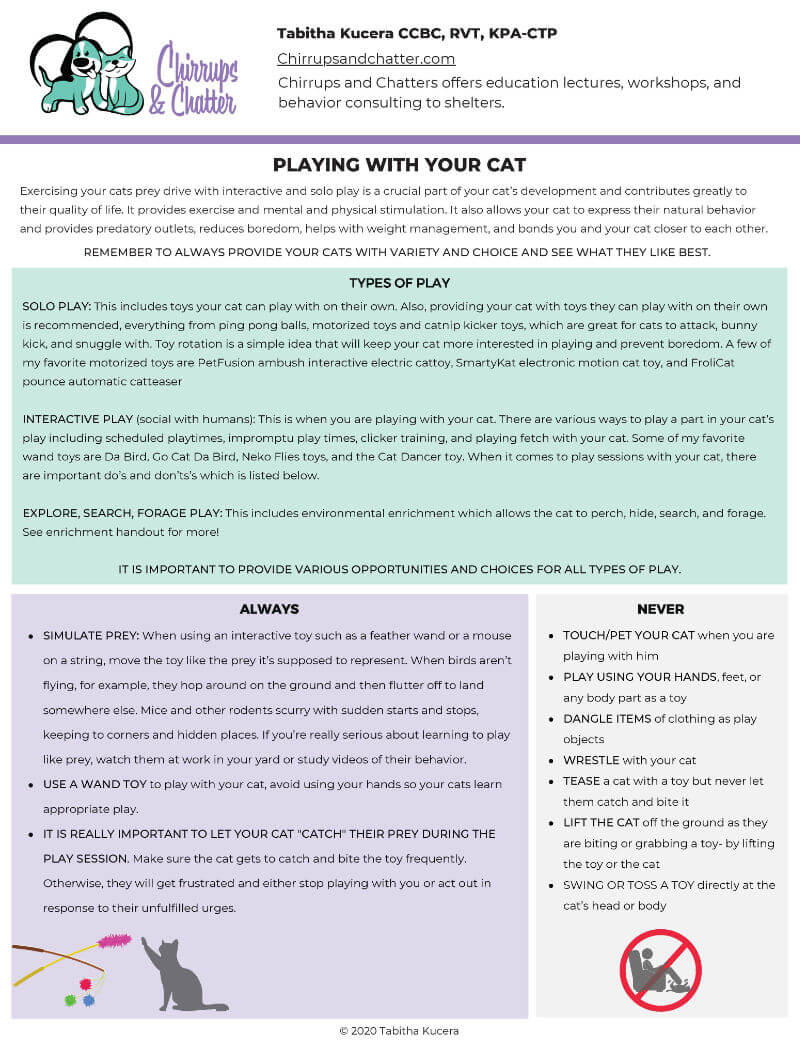
Playing With Your Cat
Exercising your cats prey drive with interactive and solo play is a crucial part of your cat’s development and contributes greatly to their quality of life. It provides exercise and mental and physical stimulation. It also allows your cat to express their natural behavior and provides predatory outlets, reduces boredom, helps with weight management, and bonds you and your cat closer to each other. This handout includes information about playing with your cat including how to appropriately play with your cat, types of play, and what not to do.
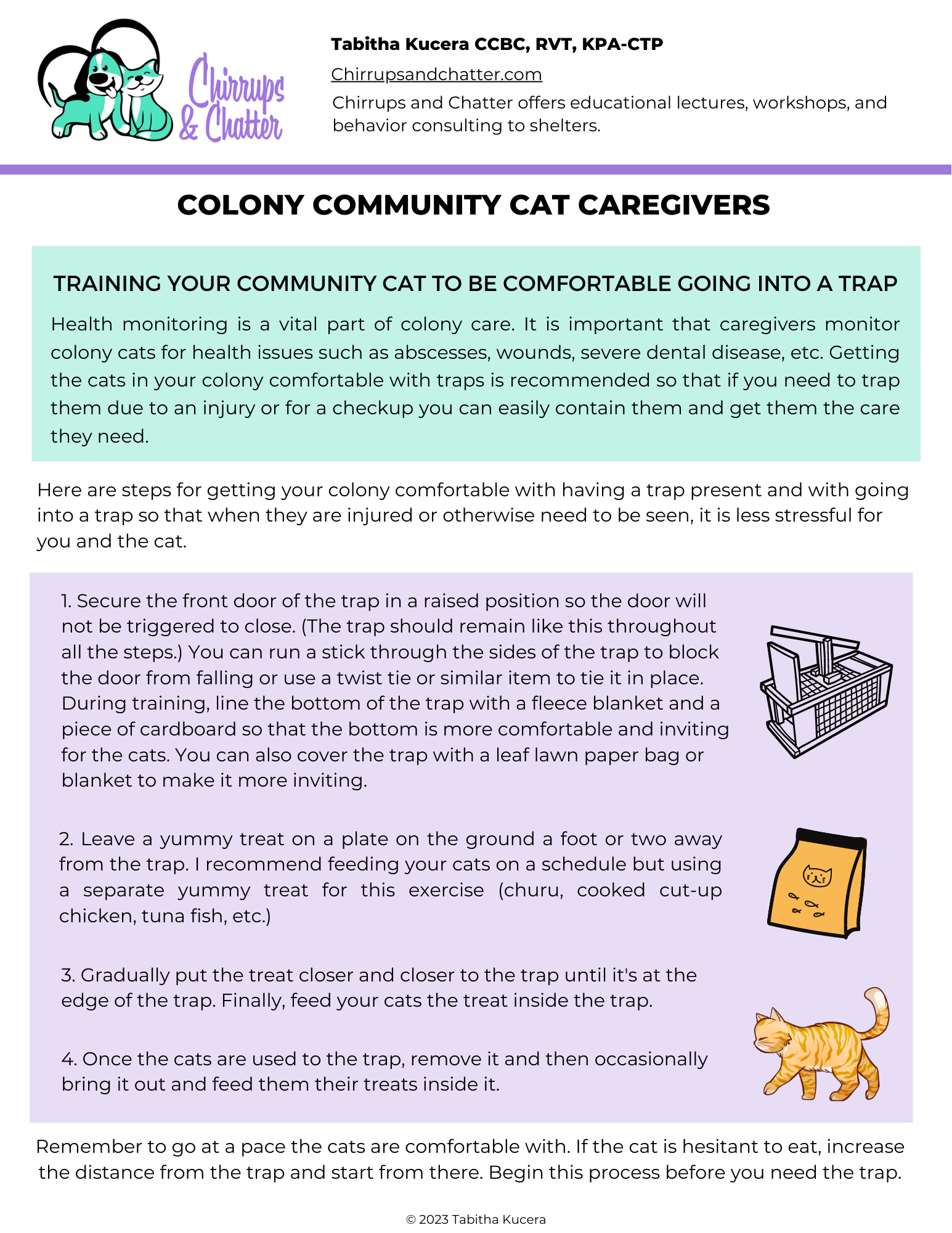
Training Your Community Cat to be Comfortable Going into a Trap
Health monitoring is a vital part of feral cat colony care. It is important that, to the extent possible, caregivers monitor colony cats for health issues ( abscesses, wounds, severe dental disease, etc.). Getting the cats in your colony comfortable with traps is recommended so if you need to trap them due to an injury, you can easily trap them and get the care they need. My cats like their carrier and feral cats can be trained to like traps♥️ This can also help to trap cats who are difficult to trap due to past trauma and fear with traps.

Litterbox Lessons
Learn the ABC’s of Litterboxes! In this handout we’ll dive into how to set up your cat (or kitten!) to be successful using the litterbox.

Teach your cat to love their carrier
Although travel can be stressful, there is a lot you can do to make carriers and vet visits less scary and even enjoyable for your cat.
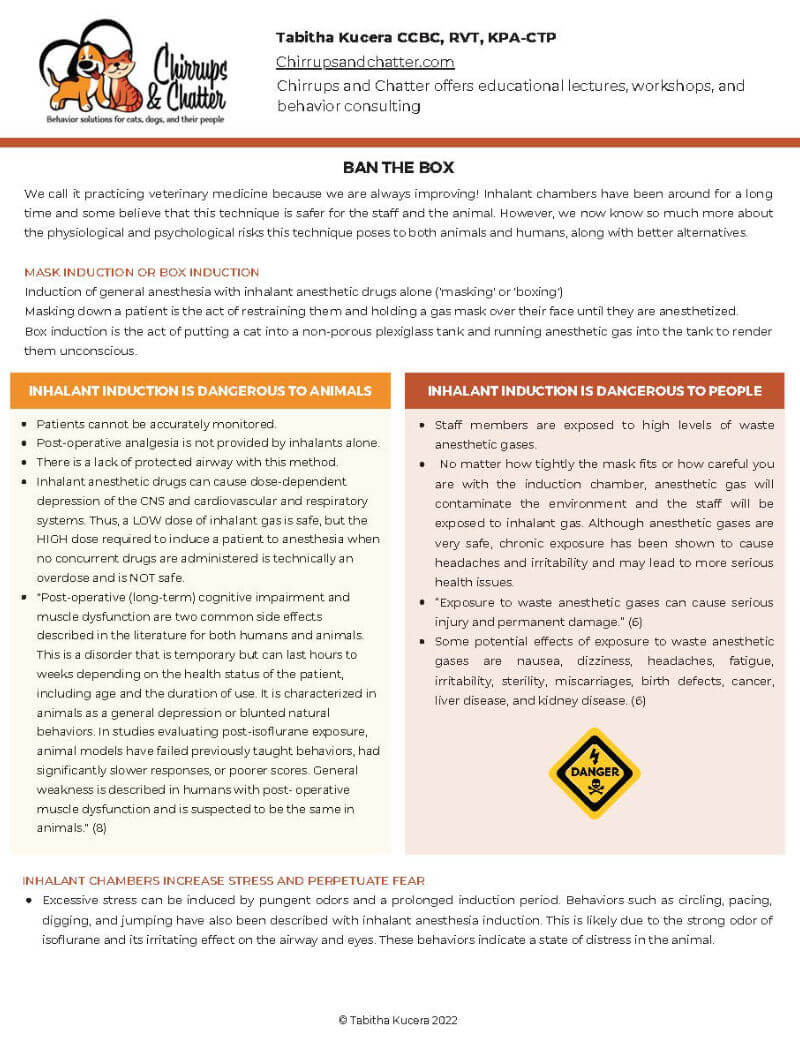
Ban the Box
We call it practicing veterinary medicine because we are always improving! Inhalant chambers have been around for a long time and some believe that this technique is safer for the staff and the animal. However, we now know so much more about the physiological and psychological risks this technique poses to both animals and humans, along with better alternatives.
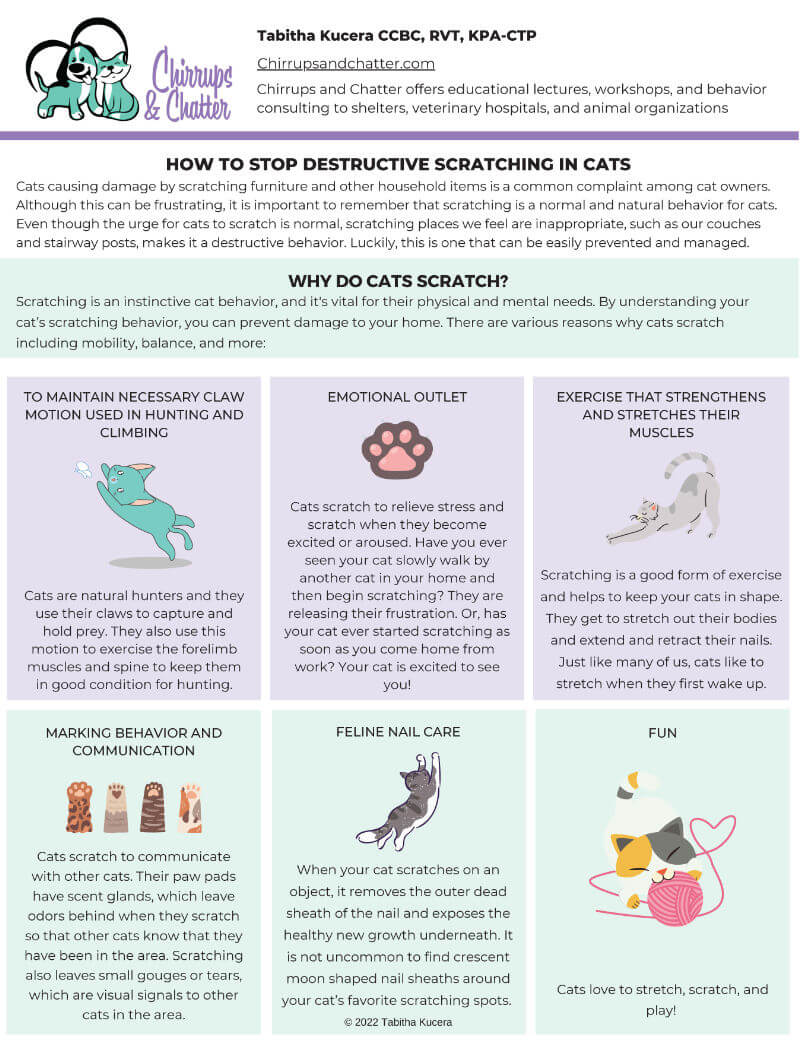
How to Stop Destructive Scratching in Cats
Cats causing damage by scratching furniture and other household items is a common complaint among cat owners. Although this can be frustrating, it is important to remember that scratching is a normal and natural behavior for cats. Even though the urge for cats to scratch is normal, scratching places we feel are inappropriate, such as our couches and stairway posts, makes it a destructive behavior. Luckily, this is one that can be easily prevented and managed.

Signs and Signals Your Cat is in Pain
Cats often disguise when they are in pain and will put forth a valiant effort to appear well. Why do they do this? Simply because they don't want to appear sick, injured or vulnerable to potential predators. You are in the best position to identify the signs and signals that your cat is in pain or distress. The sooner their pain is diagnosed and treated, the sooner they can go on to enjoy their happy, comfortable life.

Signs and Signals Your Cat is in Pain - Portuguese Version
Now available in Portuguese: Cats often disguise when they are in pain and will put forth a valiant effort to appear well. Why do they do this? Simply because they don't want to appear sick, injured or vulnerable to potential predators. You are in the best position to identify the signs and signals that your cat is in pain or distress. The sooner their pain is diagnosed and treated, the sooner they can go on to enjoy their happy, comfortable life.
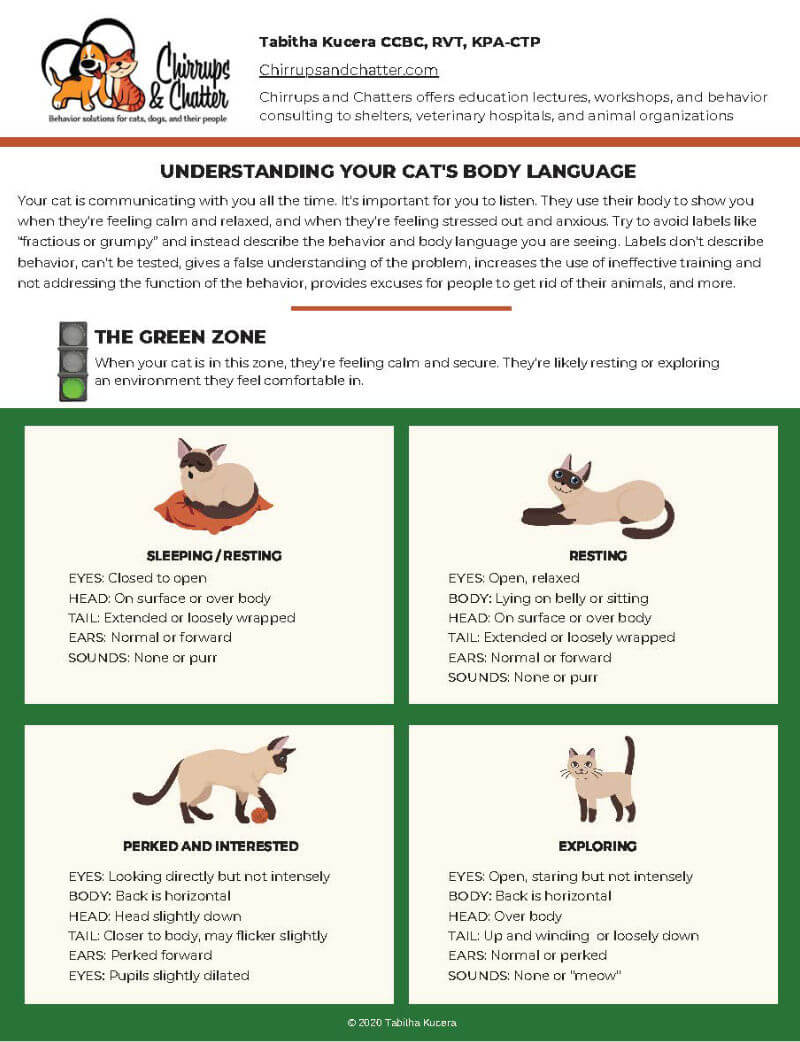
Understanding Your Cat’s Body Language
Your cat is communicating with you all the time. It's important for you to listen. They use their body to show you when they're feeling calm and relaxed, and when they're feeling stressed out and anxious. Use this guide to determine whether your cat is in the "green" zone, "red" zone or somewhere in between.

Understanding Your Cat’s Body Language - Portuguese Version
Now available in Portuguese: Your cat is communicating with you all the time. It's important for you to listen. They use their body to show you when they're feeling calm and relaxed, and when they're feeling stressed out and anxious. Use this guide to determine whether your cat is in the "green" zone, "red" zone or somewhere in between.
